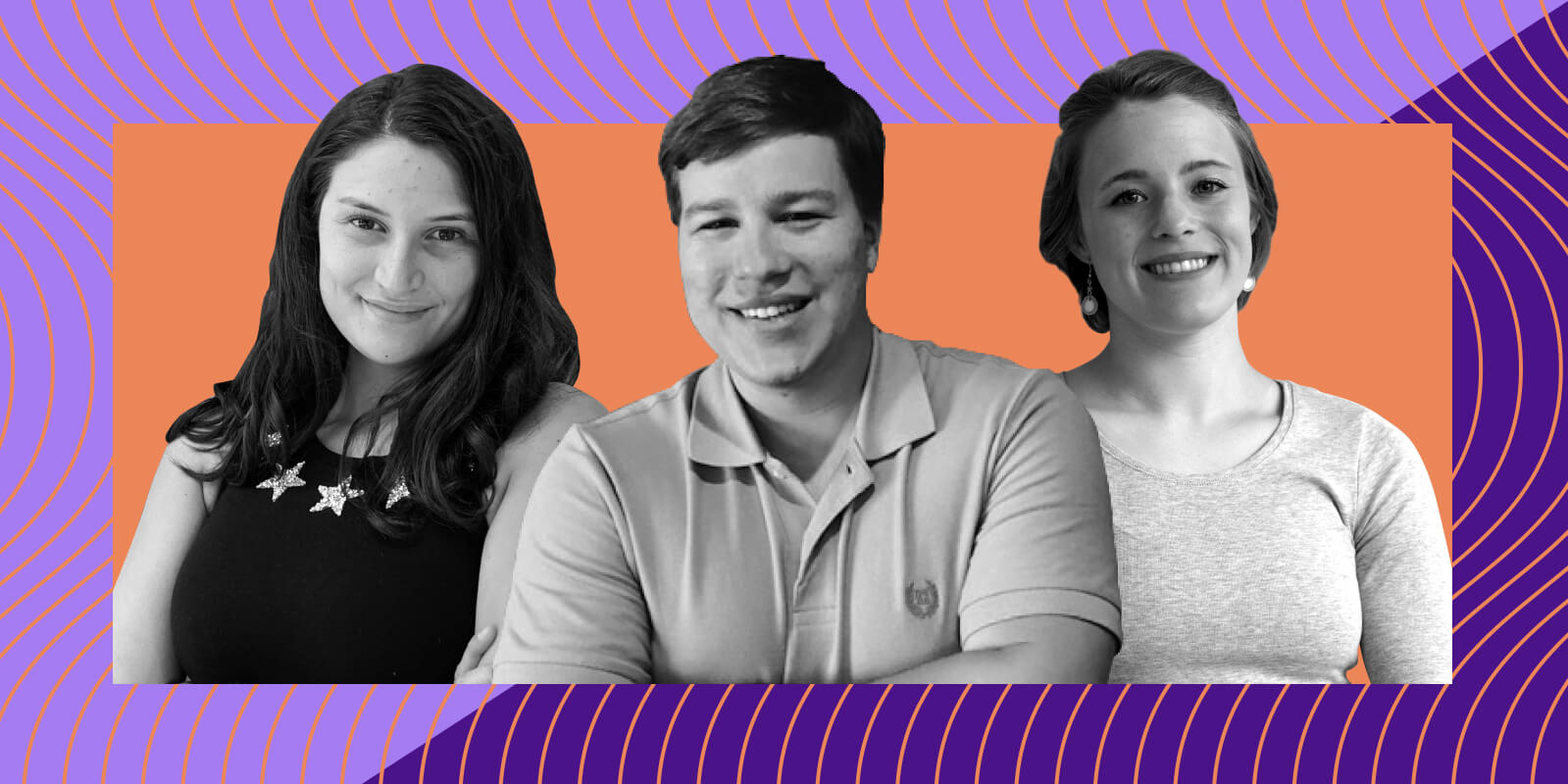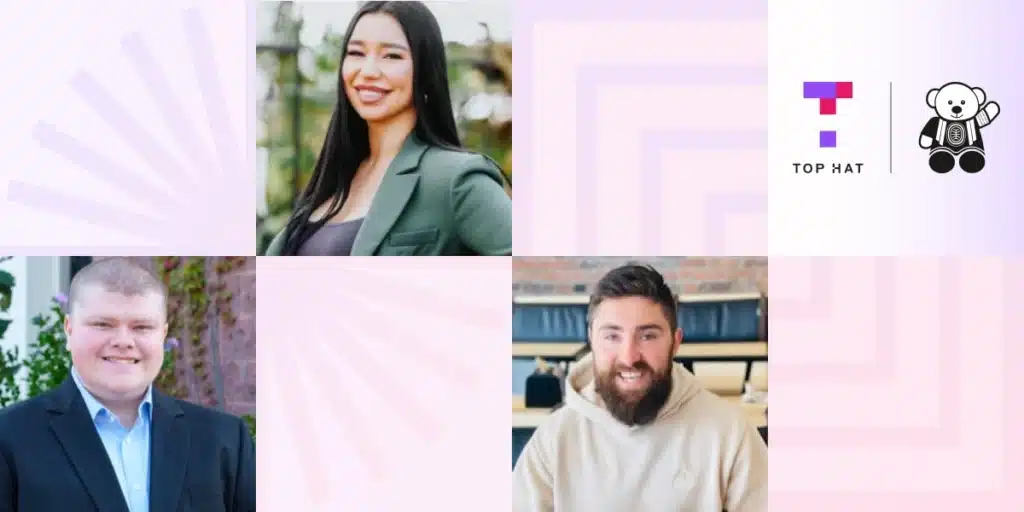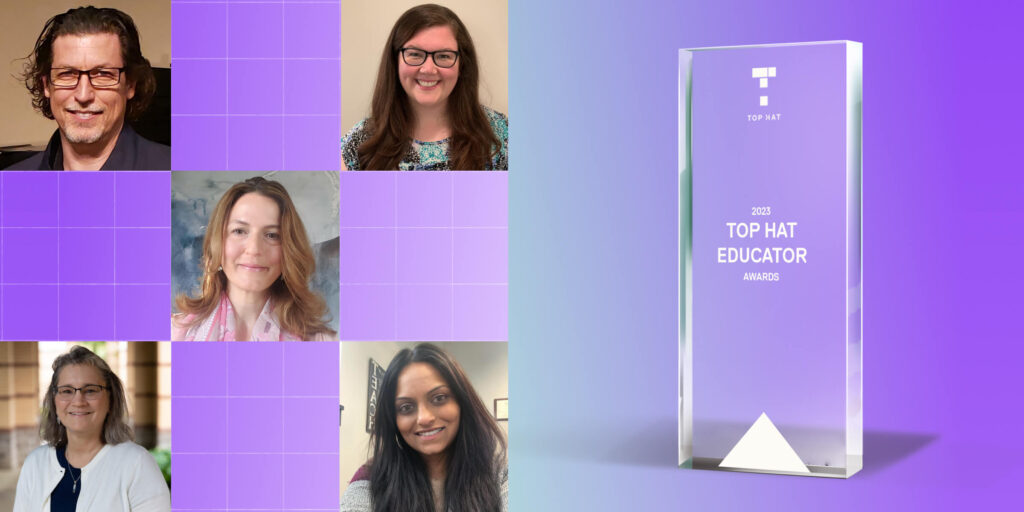Top Hat believes that hardworking students should be recognized for their commitment to learning. To honor the students who’ve excelled in their classrooms and communities, Top Hat created a $100,000 scholarship to help reduce the cost of higher education. Each of the five Top Hat Scholarship winners was nominated by their professor for overcoming challenges, while using their initiative to create an improved learning environment for themselves and for their peers.
First-place winner, Ohio University student Delia Grantham escaped from a toxic family environment to passionately pursue a degree in social work. With the help of the Top Hat Scholarship, Grantham plans to take part in extracurriculars to give back to her community. You can read more about her journey using Top Hat and her deserving win here.
Second-place winner Emma Rice from Michigan State University studies environmental economics and sees higher ed as a necessary step in her personal growth. Rice plans on pursuing grad school in hopes of eventually landing a position with the Food and Agriculture Organization of the United Nations. You can read more about how the Top Hat Scholarship will help her accomplish her goals here.
The scholarship runners-up, and winners of $10,000 each, are Hope Long, Patryk Tomaszkiewicz and Nicole Blinn. Here, they discuss how Top Hat enhanced their postsecondary journey.
Colleagues over competitors
Hope Long, Gainesville State College, University of North Georgia
Postsecondary education was always in the cards for Hope Long. “My father and mother both have their masters, and science has always been my favorite subject,” she said. But Long doesn’t just study in pursuit of her bachelor of science degree, she also instructs her peers as a Teaching Assistant (TA), something she credits with allowing her to exhibit her natural leadership skills and academic acumen. “When I started TAing, I realized how much I actually liked teaching and engaging with the material,” she said.
The use of Top Hat in her biology classes was also an effective way for Long to collaborate with her colleagues. “We were all able to learn from each other and I was able to use Top Hat as a guide to study more efficiently and effectively,” she said. Long also utilized Top Hat to guide her peers through the material via impromptu tutoring sessions, which, along with her role as an advocate of biological sustainability, inspired her professor to nominate her for a Top Hat Scholarship.
With her $10,000 win, Long plans on pursuing a dual degree in biology and chemistry—first at the bachelor’s level and then at the master’s level—to learn more about coral reefs and the Amazon Rainforest and how she can contribute to their longevity.
A spike in GPA
Patryk Tomaszkiewicz, Texas A&M University
Patryk Tomaszkiewicz’s parents emigrated from Poland and he is the first among his immediate family to graduate high school and attend university. Despite not having any family in higher ed, Tomaszkiewicz is a self-motivated double major in biomedical sciences and entomology and wants to pursue medicine as a career. On top of that, he works extra jobs to financially support his family. Any spare time that Tomaszkiewicz has is immediately dedicated to research projects.
Tomaszkiewicz attributes a 0.5 point raise in his GPA to his professor Dr. Adrienne Brundage’s use of Top Hat. Reflecting on the material in his entomology course, which he initially found difficult to comprehend, Tomaszkiewicz credits Top Hat as an effective tool both in class and after class. “Applying the material was the hardest part and Top Hat made doing so really easy,” he said.
Tomaszkiewicz’s academic journey will become less stressful with his $10,000 scholarship and his plan on attending med school will eventually impact a much wider community and enhance societal well-being.
Reducing barriers to higher ed
Nicole Blinn, Dalhousie University
Nicole Blinn’s postsecondary journey almost didn’t come to fruition. “I was quite a poor student to be honest. The ways in which I saw my health deteriorate or the health of my family deteriorate was directly related to the social conditions in which we lived,” she said. But financial struggles and health issues didn’t stop Blinn’s pursuit of higher education, and she’s now successfully studying for a degree in health promotion.
Professor Becky Spencer, Blinn’s nominator for the scholarship, used Top Hat in class to ensure students could learn just as much outside of the classroom as in. Since Blinn lives with a chronic disease, Top Hat allows her to participate in discussions without being physically present and this strategy was put into practice in a human sexuality course taught by Dr. Matthew Numer. “I couldn’t always go to class, but by using Top Hat, I was still able to engage as if I were present,” she said. Without Top Hat, Blinn’s studies would have been put on the back burner, but thankfully she’s been able to engage with her peers and professors, feeling involved in discussions regardless of her absence.
Blinn’s scholarship will alleviate the price tag associated with higher education and will help her pursue her passion for teaching. Instead of committing her time to her multiple jobs to pay for her undergraduate degree, Blinn can now rearrange her priorities accordingly. “To be able to dedicate more time to apply for graduate school and for even more funding mechanisms is immeasurably big for me,” she said. As someone who has first-hand seen the effects of chronic diseases, Blinn wants to ensure she educates others in a field she is passionate about.
Learn more about the Top Hat Scholarship here. You can read more about first-place winner, Delia Grantham, here and second-place winner, Emma Rice, here.


